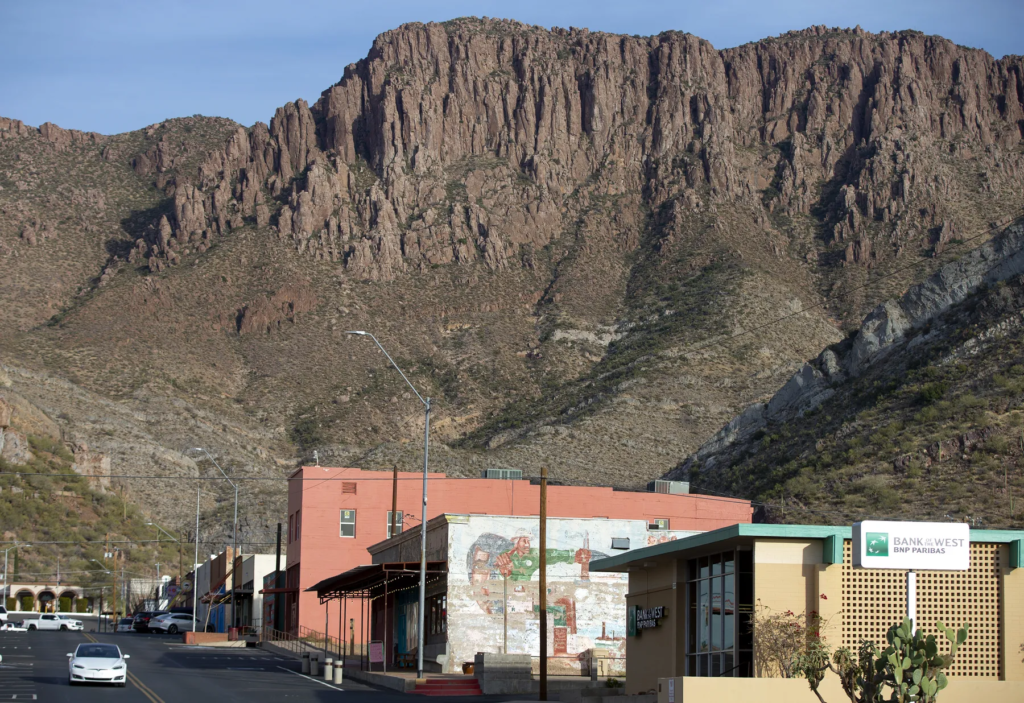When it comes to protecting sacred spaces off tribal land, tribes are challenged by outdated laws and a misunderstanding of their religious practices.
PHOENIX – Tourists speeding toward Grand Canyon National Park rarely notice the rocky protuberance that juts above the flat expanse of Arizona’s Coconino Plateau.
But to the Havasu ‘Baaja, known to the world as the Havasupai Tribe or “People of the Blue-Green Water,” the isolated hill forms the center of their lands and spiritual life.
Red Butte (Wii’I Gdwiisa or “Clenched Fist Mountain”) is the abdomen of Mother Earth. Mat Taav Tiivjunmdva, a meadow about 3 miles north of the distinctive mountain close to the Canyon’s South Rim, is her navel.
But Red Butte and Mat Taav Tiivjunmdva are part of the Kaibab National Forest and do not lie within the trust land borders of the Havasupai, who were evicted from Grand Canyon National Park in 1919. That means a federal agency and not the Havasupai control the land, deciding who uses it and how. It means the Havasupai must argue their interests alongside other public land users.
And often it means someone else is allowed to use the land and, in the eyes of the Havasupai, desecrate it.
Native peoples have always regarded certain places, like mountains, springs, particular groves of trees, rock formations or petroglyph sites as sacred spaces. These sites serve as churches, much like synagogues, mosques, temples or other structures serve Christians, Jews, Muslims, Hindus and other religious communities.
But like Red Butte and Mat Taav Tiivjunmdva, many of these spaces lie outside of tribal trust land borders, often on public lands. Some of the most well-known places are in Arizona and the southern Colorado River Valley.
Federal laws meant to protect these spaces or Native American religious practices, often come up short. Some legal experts say the federal government seems to practice a double standard when it comes to upholding the religious rights of Native peoples.
Tribes must deal with a revolving door of federal officials and opposition by stakeholders like recreation companies or extraction firms. They also face a lack of knowledge by the public about these places and why Indigenous peoples fight to keep them from harm, or at least further harm.
At Red Butte, the conflict has grown out of the forests and other lands surrounding the Grand Canyon, which are permeated with uranium ore that pierces the ground beneath in long, thin “breccia pipes.”
The Mining Act of 1872 gives U.S. citizens the right to stake claims on federal lands. One claim led to a now-idled mine on the plateau in the vicinity of Mat Taav Tiivjunmdva.
The 750-member Havasupai tribe, the only U.S. tribe that still lives below the South Rim of the Grand Canyon, has long been concerned about the mine. They fear radioactive materials will contaminate their water supply and spoil the sparkling turquoise waters tourists seek out that provide tribal members with their principal revenue source, rendering what’s left of their ancestral homeland uninhabitable.
The environmental damage could irreparably alter the ecology of the Canyon, the Havasupai say, and as it worsens, they could perish as a distinct people.
“When (the mining company) heard about our protest (against them), they approached us and offered us money and we told them, ‘No, we don’t want your money,'” the late Havasupai Chairman Rex Tilousi said during a 1992 hearing on uranium mining in Indigenous communities.
“Money is not worth the future, the destruction, the contamination of our home, the waters, the air, the earth, plant life, wildlife. When these things are contaminated, money will never cover the destruction which is going to happen if we let these mining companies come in and desecrate the areas we regard as very sacred.”
The Havasupai and their environmentalist allies have lost at least two legal battles to prevent the mine from further development. In one case, the 9th Circuit Court of Appeals determined that because Red Butte had not been designated as a “historic property” eligible for inclusion on the National Register of Historic Places until 2010, the Forest Service did not have to consider the site when it conducted an environmental impact study and tribal consultation in 1986.
The tribe said its only hope to prevent any other mines from opening is a mining ban on land near the Canyon, a measure that passed the U.S. House of Representatives in February and awaits Senate action.
But the mine near Red Butte would not close because it would predate the legislation.
It’s that sort of bureaucratic obstacle Native peoples continue to fight across Arizona and the Southwest. Their long-held spiritual ties to the land have been broken by laws, redrawn boundaries and the regulations that open public lands to profitable uses.
Not far from Red Butte, near Flagstaff, Arizona, the San Francisco Peaks have been the center of conflicts over reclaimed-wastewater use on a peak known as the home of the Hopi katsinam, the holy people who bring life-giving rain to the three mesas of the Hopi among other activities. More than a dozen tribes consider the Peaks sacred.
South Mountain in Phoenix, part of the nation’s second-largest urban park, is a sacred space to O’odham and Pee Posh peoples, yet a spur of the peak was demolished for freeway construction.
Mount Graham in eastern Arizona was lost to Apache peoples at the stroke of a presidential pen, and severely damaged by decades of logging, recreation and a huge observatory.
Oak Flat, near Superior, Arizona, is under sentence of obliteration despite being a vitally important sacred place to Apaches.
The Blythe Intaglios, some of the largest geoglyphs in the U.S., hold some protection, but others in the area are threatened by vandalism or unintentional destruction.
Tribes have tried to preserve these spaces, but they have lost court cases and administrative decisions, their spiritual claims pushed aside by the law.
And over time, these places held sacred by Indigenous peoples – from remote mountains to a Phoenix city park – have become disputed spaces.

The federal government’s philosophy of asserting moral and religious superiority over Native peoples may date back to a directive issued by a 15th-century pope.
Steven Newcomb, Shawnee and Lenape, has studied how international law affects U.S. laws that apply to Indigenous nations and peoples for nearly 40 years. His research revealed that, in 1493, the issuance of a papal bull, or decree, bestowed authority over the Western Hemisphere on Christian rulers.
That decree influenced how the U.S. regards Christianity as a superior religion, said Newcomb, author of “Pagans in the Promised Land: Decoding the Doctrine of Christian Discovery.” U.S. Supreme Court Chief Justice John Marshall referred to the “Doctrine of Discovery” in at least one of the three decisions he wrote in the early 19th century known as the Marshall Trilogy that laid the foundation of federal Indian law.
Marshall wrote that in 1496, King Henry VII of Great Britain commissioned explorer John Cabot to discover countries then unknown to Christians and claim them in the king’s name. He asserted a right to take possession of the United States, “notwithstanding the occupancy of the natives, who were heathens, and, at the same time, admitting the prior title of any Christian people who may have made a previous discovery.”
“The distinction that the chief justice made is between Christian people and Natives who are ‘heathens,'” Newcomb said. “What’s being used against Native nations is the Bible and Christianity, and the idea that the chosen people have been chosen to take over the lands that God bequeathed to them as an everlasting possession or inheritance.”

From 1883 until 1934, the U.S. officially forbade Native American religious practices through the “Code of Indian Offenses.” The document was intended to obliterate Native cultures by halting religious and cultural practices.
Retired law professor Robert N. Clinton noted in a 2008 blog post that medicine practices, Native dances, giving marriage gifts to the bride’s family, traditional reciprocal gift-giving and other customs were all made punishable offenses, sometimes by denying food for violations, other times with jail terms.
Commissioner of Indian Affairs John Collier took a more progressive approach to Native issues. He issued a 1934 circular ending the practice: “The cultural liberty of Indians is in all respects to be considered equal to that of any non-Indian group.”
Congress passed the American Indian Religious Freedom Act of 1978, known as AIRFA. The legislation sought to reverse longtime federal policies that prohibited Indigenous peoples from practicing their religions.
This policy statement established federal policies to “protect and preserve for American Indians their inherent right of freedom to believe, express, and exercise the traditional religions of the American Indian, Eskimo, Aleut, and Native Hawaiians.” The legislation also called for access to cultural sites, use and possession of sacred objects, and the freedom to worship.
The Religious Freedom Restoration Act of 1993 prohibits state or federal governments from placing substantial burdens on a person’s religious exercise except under certain conditions.
Other federal laws govern how agencies make decisions about projects on public lands and protect Indigenous cultural and religious spaces, though all of these laws have shortcomings.




